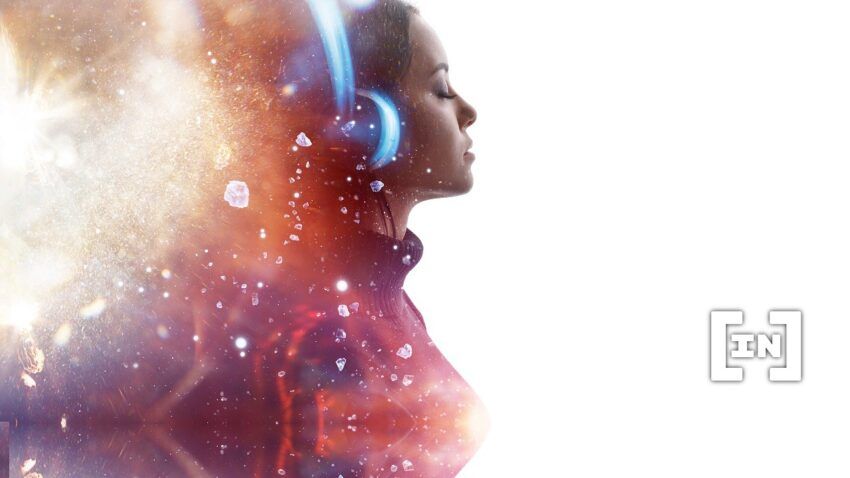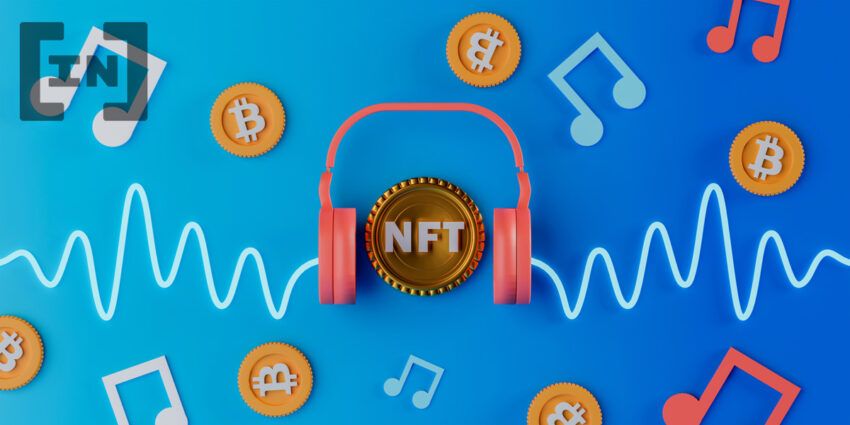Top 5 Ways to Use Them in Marketing That You Never Thought
NFTs are used in music marketing in amazing ways. Marketers need to take note of the fascinating utility issues that are already happening, says Emil Angervall, co-founder of Corite.
In recent years, blockchain, cryptocurrencies, NFT and the “metaverse” have become part of popular culture. Global brands such as Meta, TIME, Mastercard, Samsung and Louis Vuitton are adding NFTs to their services, with the expectation that the use of these technologies will continue to accelerate. The music industry is experiencing a particularly high rate of NFT adoption. An increasing number of musical acts embrace this technology and create new ways of communicating with fans.
Meanwhile, investors are not always aware of the full range of services offered by the company they invest in. Investing in NFTs may be a good idea, but for long-term success you need strong tools and real value. However, rare people compare the project with others in the market, try to identify its unique, examine the company’s activity and learn how to report campaign results.
So, in this article, based on my own experiences and observations, I will talk about NFT use cases that have not received much attention yet, although they have great potential. These tools can help companies turn their audiences into an affectionate community, while attracting the attention of new investors.
1. NFTs as ticket sales for real world events
Today’s ticket industry faces enormous challenges, including counterfeiting, bad actors, widespread fraud and, most importantly, fragmentation. When a large platform releases a ticket, it can be bought and sold several times in secondary marketplaces. Using an NFT pass can play a role in solving several of these problems.
Fans don’t just buy paper and throw it away. Instead, they have a digital resource with real value. Mola Chill Club, which was the first completely sold-out event with only NFT tickets, is an excellent example of what it can look like in practice. The project has designed NFTs that give members access to exclusive worldwide music shows. Some of the symbols in the collection also came with surprises, such as a meet-and-greet with the artist, backstage access and two-way flights to the first event.
Another example is the Coachella Collectibles series, which is a collaborative project between FTX and Coachella. This series will offer unique opportunities such as lifetime passes, meet-and-greet and more. The Sweden Way Out West (WOW) festival is currently working on a similar collection. It will be an exclusive NFT collection of moments captured by festival goers.
The growing use of NFT tickets for high-profile events demonstrates a recognition that new technologies create new opportunities to gain a competitive advantage and attract people’s attention.
2. Digital collectibles
Collecting digital artwork can also be a strong idea if a product has a history and is released at the right time. To give you an example, in 2017, the CryptoKitties collection took up 15% of all traffic on the Ethereum network. Due to the high number of users, it was difficult to play CryptoKitties. Many transactions, such as buying and selling cats, took longer than usual and required more than one attempt. The heavy traffic did not damage the kittens’ reputation in any way. They have even been praised by some of the most important people in the crypto world.
In the music business, a single song, an album, or even a clip can become a collector’s item or a resource. Musicians have found that NFT technology allows them to connect directly to fans and give them tokenized versions of their work.
Fans and artists can even work together on charity projects like Grimes did when she released the WarNymph Collection. The Canadian singer-songwriter earned $ 5.8 million from selling a set of 10 exclusive digital works of art, some of which featured her original songs. A percentage of the proceeds from the sale of the WarNymph Collection was donated to Carbon 180, a non-profit organization dedicated to reducing carbon emissions.
There are many who like to buy art, books, stamps, etc., so collecting NFTs can be another hobby for them. They get excited just thinking about collecting and are ready to spend money on things that have a history. So, projects just need to create a collection with a coherent story to reach this audience.
3. Virtual events
Bringing people together in the same physical space is not always possible. This is why virtual and hybrid events have become increasingly popular in recent years, and with good reason. Virtual concerts and meetings not only help planners expand their audience and promote inclusion, but they can be an effective way to increase revenue and track key data about your audience. Despite these positive aspects, there are still many planners who do not know about arranging events online or adding virtual components to their personal events.
Despite the fact that the term “metavers” has become increasingly common, many are still unsure of what it means. Simply put, the meta-verse is a virtual space where users can interact with each other in a computer-generated environment.
The music industry was one of the first to see the potential of online events, especially given the ongoing coronavirus pandemic. It quickly embraces virtual meet-and-greetings, concerts and other forms of engagement. Virtual events are important because they allow artists to reach hundreds of thousands of fans without being limited by geography or venue. While the virtual world may never completely replace the real thing, there are several notable names, including Marshmello, Ariana Grandeand Travis Scott has already achieved great successes in the metaverse.
Virtual events are especially attractive to people who live far away from larger cities and are put off by the time and cost of traveling long distances to attend in person. As virtual events become increasingly popular, they also continually improve the end-user experience. By including virtual reality, AI, NFTs, holograms, 3D graphics, digital twinning and cryptocurrency integration, attendees can feel “really there” at the event. I predict that this trend will continue for the next decade, making virtual concerts the norm rather than a novelty.

4. NFTs and gamification
I like the idea of incorporating gamification into a business using an NFT collection. The most appealing aspect for users is how easy it is: just buy and hold a token to receive exclusive benefits. What makes such a product interaction exciting? People like to play games, and the gamification element in NFT holds the user’s attention, immerses them deeper into your product and sets you apart from your competitors.
You do not have to make the whole game; sometimes it’s enough to just let people generate their own NFTs. The German dance world giant BOYS NOIZE aka Alex Sidha has already put it to the test. His “Rave Pigs” collection consists of 6666 generative tokens with characters from Berlin’s underground electronic scene. Each of these characters was created by combining 129 attributes into 10 visual categories and five sound layers, resulting in over 50 trillion possible combinations. Each unique token includes both a digital image and a music clip, the rights of which are owned by the token holder.
Creating playable games based on NFTs can also make them more valuable. Axie Infinity, for example, let people “play” with them by breeding more, buying land, upgrading Axies and fighting each other. By turning these NFTs into games, Axie Infinity became the largest Play-to-Earn platform in the world, with an AXS market value of over $ 3 billion and a daily trading volume of over $ 150 million.
5. NFT, marketing and crowdfunding
Finally, I want to talk about crowdfunding with fan power, which I think benefits both creators and audiences the most. This mechanism starts when artists want to fund their new album without the help of labels and instead rely on the support of the community who believe in their success. In exchange for their contributions, investors are entitled to a portion of the money earned from streaming and a valuable NFT, such as an unplugged version of a song or music video.
Artists receive money right away to help with production and marketing costs while retaining ownership of their music. For users, it is as if they are giving money to artists they believe have a chance to succeed, hoping to share in their success.
Alan Walkers Unit Campaign, which raised $ 25,000 in a matter of days, exemplifies how this model works in practice. The song’s streaming goals will probably be reached faster than expected. Inspired by that success, another, much larger campaign centered around Alan’s Origins EP was launched. This crowdfunding model can also be expanded with “fan missions”, which reward users with airdrops and other benefits for completing specific tasks set by artists.
At the end of the day, musical acts have a community that values them and is invested in their success. Users do not play because they know that if the artist becomes popular, the value of their shares will rise. Digital assets are worth more because of the work and reputation of musicians.

Marketing and the importance of engaging the audience
Incorporating blockchain and NFTs will in principle seem like a daunting step for traditional companies trying to prepare their marketing. However, like all technology, it becomes easier to distribute and easier for end users to take advantage of as it becomes more common. I encourage everyone to go outside the comfort zone and become an “early adopter”. The world is changing, and people (especially young people) want to seek out new experiences and opportunities. Brands that get an early start in the NFT world will be best equipped to exploit them to their maximum potential in the future.
About the author
Emil Angervall is a co-founder of Corite. Corite is a blockchain-based digital music distributor that delivers artists’ music to various streaming services, including Spotify, Apple Music, Pandora and TIDAL.
Marketing and NFTs: Do you have a say in marketing NFTs, marketing your business, blockchain and marketing, or anything else? Write to us or participate in the discussion in our Telegram channel. You can also catch us on Tik Tok, Facebook or Twitter.
Disclaimer
All information on our website is published in good faith and for general information purposes only. Any action taken by the reader on the information contained on our website is strictly at your own risk.


